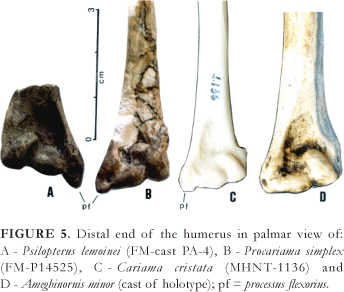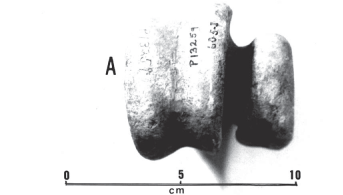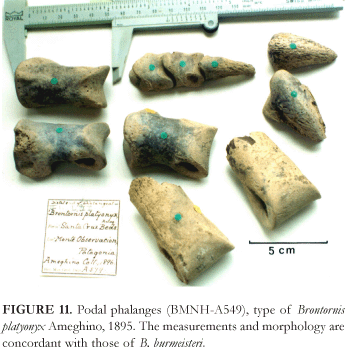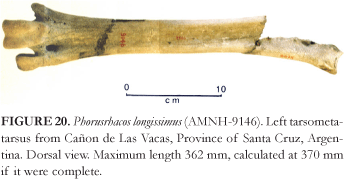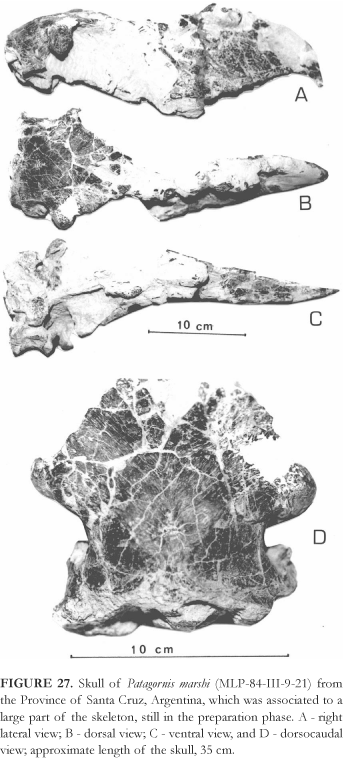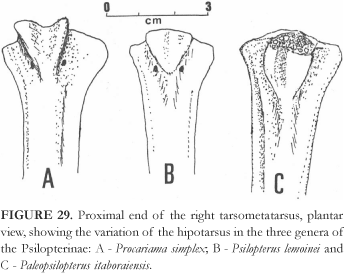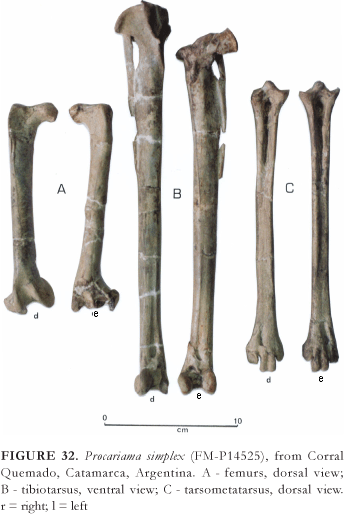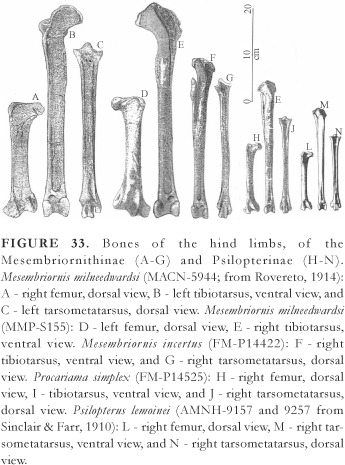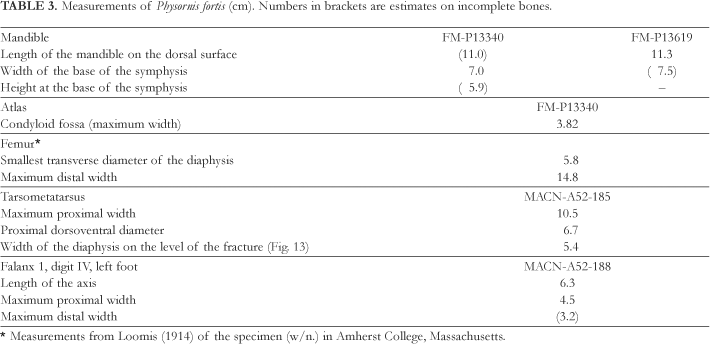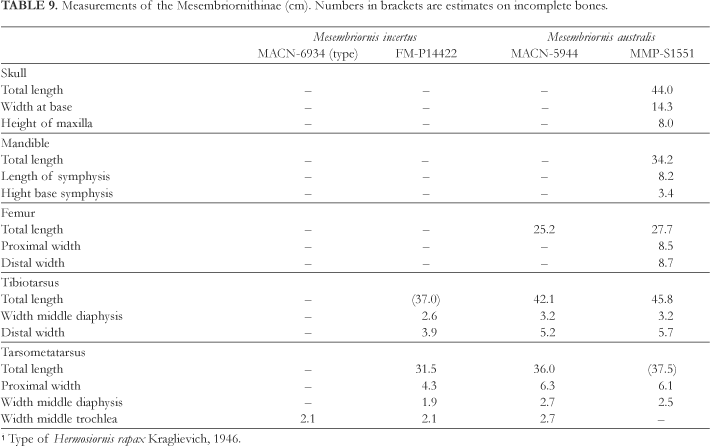Fossil remains of birds belonging to the family Phorusrhacidae were studied in several museums of South America, North America and Europe, the main objective being to characterize this family and solve the chaotic state of the nomenclature and classification of these birds. Reconstruction of some species has been done, with the purpose of having an idea about the size, body weight, posture and habit based in their skeletons. The European species, Ameghinornis minor and Aenigmavis sapea are refuted as belonging to this family. Also several forms described from the Tertiary of Argentina are refuted, because they are based on inadequate segments of the skeleton for a good identification, as is the case of the genera Cunampaia, Smiliornis, Pseudolarus, Lophiornis and Riacama, frequently refered to as belonging to the Phorusrhacidae. The Phorusrhacidae family probably originated in South America, since the end of the Cretaceous, as a result of an endemism formed by the isolation of this landmass. During the end of the Pliocene, with the emersion of the Panama isthmus, the family spread to the North America where at least one species is known Titanis walleri, which perhaps represents the last known species of this family, probably becoming extinct in the beginning of the Pleistocene. A systematic revision has been conducted, dealing with the countless problems of nomenclature, and the Phorusrhacidae is now composed of five subfamilies, which are: Brontornithinae, Phorusrhacinae, Patagornithinae, Psilopterinae and Mesembriornithinae in which 13 genera and 17 species are considered. Characters of all taxa are described and a geochronological distribution of all species is presented.
Phorusrhacidae; Ralliformes; Gruiformes; Tertiary; Giant birds





